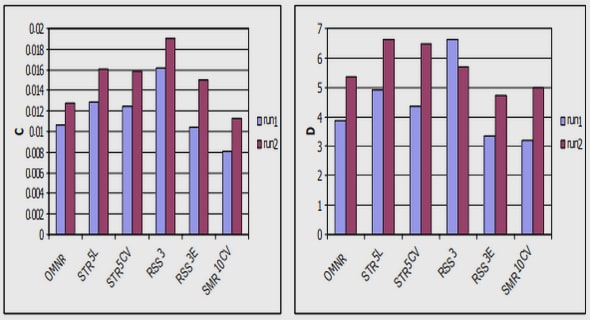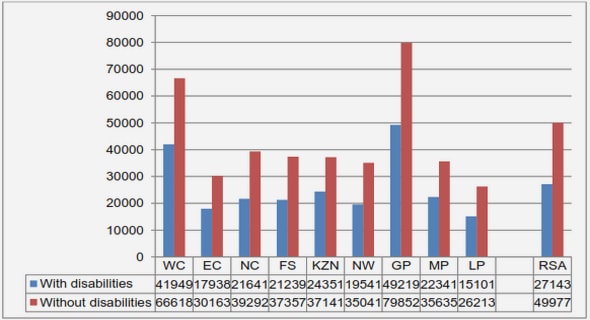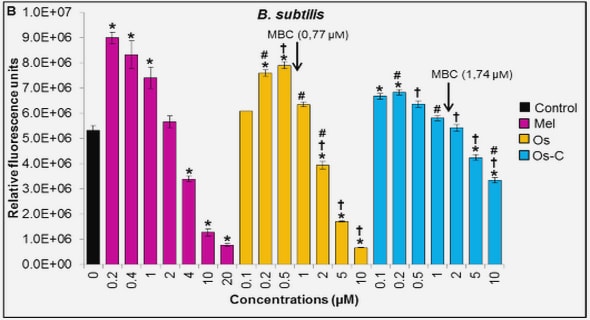Get Complete Project Material File(s) Now! »
OMC-2 FIR4
The Orion Molecular Cloud is the nearest giant complex molecular cloud, located at a distance of 420 pc (Menten et al. 2007; Hirota et al. 2007). This young ( 10 Myr old) complex is divided into two fragments : Orion A and B. In addition, Orion A is formed by three sub-clouds OMC-1, OMC-2 and OMC-3, each containing numerous Class 0 protostars (Shimajiri et al. 2008). The sub-cloud OMC-2 was observed for the first time in the near-IR by Gatley et al. (1974). It lies about 2 pc north of the Trapezium, its mass is 102 M (Bally et al. 1987), its luminosity 2000 L (Thronson et al. 1978).
The brightest submillimeter (350-1300 m) source in the OMC-2 region is FIR 4. This source has a mass between 30 and 60 M , making it an intermediate-mass young stel-lar object. Figure 2.10 shows the position of OMC-2 FIR 4 relative to our solar system (All dimensions are in parsecs relative to the center of Gould’s belt4). OMC-2 FIR 4 is in-deed a protocluster where the near-infrared, mid-infrared and millimetre-wavelength emission peaks are all offset from one-another by 5”. Interferometric continuum ob-servations at 2 and 3.3 mm showed a clumpy substructure at the 5” scale, with the presence of at least three cores (Shimajiri et al. 2008; López-Sepulcre et al. 2013), see Figure 2.11.
OMC-2 FIR 4 is kinematically and chemically complex. Castets & Langer (1995) used the observations of C32S J=5-4 to report the outflows in OMC-2. Several studies followed this paper (e.g. Jørgensen et al. (2006); Shimajiri et al. (2008); Crimier et al. Gould’s belt: our solar system is close to the center of a ring of OB stars, that is tilted with respect to the Milky Way’s plan. Several giant molecular clouds, where star formation is going on, are also associated with this ring.
FIGURE 2.11: Schema of OMC-2 FIR 4 and the nearby OMC-2 FIR 3, summarising all the physical elements in the region. The white ellipse inside the main source depicts the ionised region powered by a B4 young star. The colours of the main, west, and south sources represent their systemic velocities with respect to the nominal value for OMC-2 FIR 4 (VLSR = 11.4 km s 1), marked in green. The small red and blue cir-cles within the three sources represent the possibility that they harbour smaller unresolved molecular condensations, with the colour blue de-noting a colder temperature than red. Adapted from (López-Sepulcre et al. 2013) (2009); Kama et al. (2010)). These studies suggested that OMC-2 FIR 4 contains three main components. 1): Cool Envelope: large-scale cool envelope about 10000 AU (i.e. 0.05 pc) across. 2): Hot Core: An inner hot region, with kinetic temperatures above 100 K and around 400 AU in size. 3): Shock Region: produced by the interaction of an ex-ternal bipolar outflow driven by the nearby OMC-2 FIR 3, which lies to the north-east of FIR 4. In addition Shimajiri et al. (2008) suggested the presence of 11 cores, seen at 3 mm inside this region, and speculated that such fragmentation has been externally triggered by the FIR 3 outflow. Successive observations with IRAM PdBI only detected 3 sources (López-Sepulcre et al. 2013).
Many evidences have been reported from kinematical and excitation considerations suggesting that FIR 4 hosts a compact outflow. Note that the detection of such an out-flow would be a key piece of evidence to support the interpretation of OMC-2 FIR 4 as a young protostar (Shimajiri et al. 2008). Recently, Furlan et al. (2014) find that the position of OMC-2 FIR 4, measured with the IRAC 4.5 m image, is offset with respect to the position measured at 8-70 m, but matches that of the radio continuum source detected at 3.6 cm by Reipurth et al. (1999). Both could be interpreted as emission from shocked gas in an outflow. Furthermore, there is evidence in favor of an outflow from far-IR line spectra (Manoj et al. 2013; Kama et al. 2013) based on velocity profiles, tem-peratures, and densities derived from CO lines. Note however that the CO emission although they may contain a contribution from an outflow driven by the nearby proto-star OMC-2 FIR 3. In summary, these data support the idea that FIR 4 is indeed a pro-tostar, driving a compact outflow. In addition, its centimeter flux is consistent with that observed in outflows from other protostars with luminosities <100 L (Anglada 1995). Finally, Shimajiri et al. (2015) reported the first line-survey observations at 82–106 GHz and 335–355 GHz toward FIR 4, using the Nobeyama 45 m and ASTE(Atacama Submil-limeter Telescope Experiment ) telescopes. They find broad components of C34S, SO, SiO, H13CN, HC15N, H132CO, H2CS, HC3N, and CH3OH are detected only towards FIR 4. Again, this is in favour of an outflow-shocked gas origin. Finally, recent Herschel observations have discovered the presence of a source of energetic (> 10 MeV) particles inside the OMC-2 FIR complex (Ceccarelli et al. 2014b).
OMC-2 FIR 4 is one of intermediate-mass chemically rich objects. In Table 2.4 I list all the detected molecules so far, and Figure 2.12 shows the number of detected molecules in OMC-2 FIR 4 as a function of their number of atoms. The origins of the chemical enrichment in this source is still under discussions.
Overview
Limitations of available tools is one of the obstacles to overcome in order to explore and study the complex organic molecules (COMs) in the star formation regions. Since the beginning of astronomical science, observations at different wavelength has been the main approach, where, high spatial and spectral resolution observations, with high sensitivity, are generally sought after. To peer into the deep interior of the early stages of star formation we need to observe using radio telescopes, because these objects emit at long wavelengths roughly from 10 m to a few mm and cm.
For my research project, I used radio observations from surveys performed with the IRAM 30m telescope, namely TIMASSS (The IRAS16293 Millimeter And Submillime-ter Spectral Survey) and ASAI (Astrochemical Surveys at IRAM). The publicly avail-able package CASSIS (Centre d’Analyse Scientifique de Spectres Instrumentaux et Syn-thétiques) has been used as a second tool for lines identification and to determine the observed line emission of molecules. The radiative transfer model GRAPES (GReno-ble Analysis of Protostellar Envelope Spectra) is the third tool used to interpret them.
Spectral surveys
Context
Molecular content in star forming regions can be determined precisely from spectral surveys. Study of excitation and line shapes of individual species can be used to anal-yse physical and chemical conditions in regions where these species are coming from, thus allowing us to understand the complex chemistry in these regions.
From different viewpoints, unbiased spectral surveys studies are valuable tools to in-vestigate the star formation process. They give access to different lines from the same molecule, permitting multi-frequency analysis and modelling. Since lines correspond-ing to different upper level energies and Einstein coefficients are excited at different (1) In the 2mm band, each frequency setting is observed twice, i.e., once at each of the two spectral resolutions (0.32 and 1 MHz), while in the 197-265 GHz band, each frequency setting is observed only one time, at a slightly different spectral resolution (1 or 1.25 MHz), (2)rms is given in 1.5km.s 1 bins temperatures and densities, they can probe several regions in the line of sight. There-fore, a careful analysis can distinguish between the various physical components in the beam even without the spectral resolution, in some cases . If one adds also the kine-matic information provided by the line profiles, the method can be so powerful that it can identify sub-structures in the line of sight, even if the spatial resolution of the ob-servations is too low to solve them. Because of this diagnostic power, several unbiased spectral surveys have been obtained in the past in the millimeter and sub-millimeter bands accessible from ground in the direction of star forming regions. List of these sur-veys can be found in Herbst & van Dishoeck (2009) and Caselli & Ceccarelli (2012). For my work, I used the following spectral survey projects.
TIMASSS
The observational data from The IRAS16293 Millimeter And Submillimeter Spectral Survey (TIMASSS: http://www-laog.obs.ujf-grenoble.fr/heberges/timasss/; Caux et al. (2011)) were used for this project. Briefly, the survey covers the 80-280 and 328-366 GHz fre-quency intervals and it was obtained at the IRAM-30m and JCMT-15m telescopes dur-ing the period from January 2004 to August 2006. Overall, the observations required a total of about 300 hours ( 200hr at IRAM and 100hr at JCMT) of observing time. Details on the data reduction and calibration can be found in Caux et al. (2011). Obser-vations are centered on IRAS16293B at (2000.0) = 16h 32m 22s.6, (2000.0)= -24o 280 3300: The A and B components are both inside the beam of observations at all frequencies. Parameters of the observations are listed in Table (3.1).
ASAI
The Large Program (ASAI:Astrochemical Surveys at IRAM ), carried out at the IRAM 30m telescope joins the efforts of several groups in astrochemistry in Spain and France, to address the question of our “chemical origins”. ASAI goal is to obtain a complete census of the gas chemical composition, its evolution along the main stages of the star formation process, from prestellar cores and protostars to protoplanetary disks, in or-der to understand the processes which govern the emergence of molecular complexity, and the formation of pre-biotic molecules. This is achieved through highly sensitive and systematic spectral line surveys of a sample of sources illustrative of the various stages of protostellar evolution. Observations and data reduction procedures are pre-sented in detail in López-Sepulcre et al. (2015). Briefly, the spectral data were obtained in several observing runs between 2011 and 2014 using the EMIR receivers at 3 mm (80–116 GHz), 2 mm (129–173 GHz), and 1.3 mm (200– 276 GHz).
Table of contents :
1 Introduction
1.1 Overview
1.2 Low-mass star formation
1.3 Chemical complexity evolution
1.4 Census of molecules in the interstellar medium
1.5 Aims and structure of this thesis
2 Description of IRAS16293-2422 and OMC-2 FIR 4
2.1 IRAS16293-2422
2.1.1 The physical structure
2.1.2 The outflow system in the IRAS16293
2.1.3 The chemical structure
2.1.4 Deuteration in IRAS16293
2.2 OMC-2 FIR4
3 Used Tools
3.1 Overview
3.2 Spectral surveys
3.2.1 Context
3.2.2 TIMASSS
3.2.3 ASAI
3.3 Lines identification
3.3.1 Criteria for identification
3.3.2 Tool: CASSIS
3.4 Lines parameters
3.4.1 Gaussian fit
3.4.2 LTE Modeling for upper limits
3.5 SLED Modeling
3.5.1 GRAPES
3.5.2 General description of the package
3.5.3 Method of work
4 COMs in IRAS16293-24-22
4.1 Abstract
4.2 Introduction
4.3 Source description
4.4 The data set
4.4.1 Observations
4.4.2 Species identification
4.5 Analysis and results
4.5.1 Model description
4.5.2 Results
4.6 Discussion
4.7 Conclusions
5 Cyanopolyynes in IRAS16293-2422
5.1 Abstract
5.2 Introduction
5.3 Source description
5.4 The data set
5.4.1 Observations
5.4.2 Species identification
5.5 Line modeling
5.5.1 Model description
5.5.2 Results
5.6 The chemical origin of HC3N
5.6.1 Cold envelope
5.6.2 Hot corino
5.6.3 HC5N
5.7 Discussion
5.7.1 General remarks on cyanopolyynes in different environments
5.7.2 The present and past history of IRAS16293
5.7.3 The HC3N deuteration
5.8 Conclusions
6 Formamide in Low- and Intermediate-Mass Objects
6.1 Abstract
6.2 Introduction
6.3 Source sample
6.4 Observations and data reduction
6.5 Results
6.5.1 Line spectra
6.5.2 Derivation of physical properties Rotational diagram analysis Radiative transfer analysis taking into account the source structure
6.6 Discussion
6.6.1 Formation routes of NH2CHO
6.6.2 Correlation between HNCO and NH2CHO
6.7 Conclusions
7 Conclusions and FutureWork
7.1 Conclusions
7.2 FutureWork


